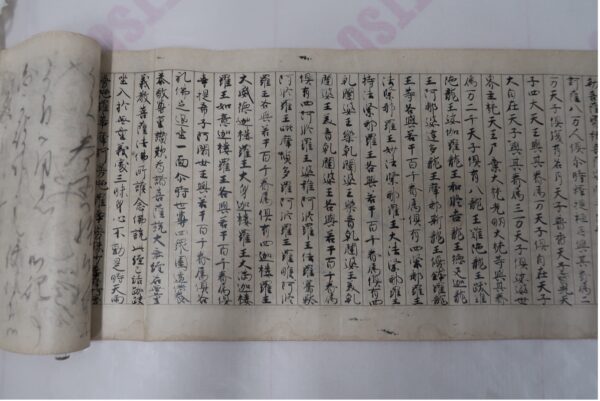While a fading practice today, handwritten letters in medieval Japan were the sole form of communication between long-separated lovers, parents unlikely to reunite with their children, and distant friends, artists, and poets. The quality and decoration of the paper itself was of critical importance, and an admirer’s advances could be rejected on the basis of crude paper. Memoirs were punctuated by poignant laments on the long wait for letters that might never arrive. For one diarist, seeing the handwriting of her love summoned unbearable sorrow, and she committed the letters to the fire rather than live with their stark reminder of loss.
In the epistolary culture of medieval Buddhist Japan, handwritten letters, therefore, figured prominently in mourning rituals. This talk explores the creation, materiality, and haptics of letter sutras (shōsokukyō). These textually layered manuscripts are the result of a Buddhist death ritual in which family and friends reused paper bearing the handwriting of a deceased loved one to copy scripture, creating memorial palimpsests. The early fourteenth-century Lotus Sutra copied by the celebrated calligrapher Emperor Fushimi (1265-1317, r. 1287-98) on the back of an astonishing 171 letters from his father, Emperor GoFukakusa (1243-1304, r. 1246-59), provides an excellent illustration of the dynamics of mourning and ritual realised through material expression. They also stand as a prime example of what we can learn from treating palimpsests as layered biographies. By analysing the shifting functions of handwriting in these manuscripts, the talk ties together themes of embodiment, memory, and medieval reuse and recycling within profoundly personal papers steeped in grief and prayers for salvation.
Halle O’Neal is a Reader in Japanese art and Co-Director of Edinburgh Buddhist Studies at the University of Edinburgh. Her recent book, Word Embodied: The Jeweled Pagoda Mandalas in Japanese Buddhist Art published by Harvard University Asia Center, explored the intersections of word and image and relics and reliquaries, as well as the performativity and objecthood of Buddhist texts. She is currently on a Leverhulme Research Fellowship, in which she is working on her book, “Writing against Death: Reuse and Recycling in Japanese Buddhist Manuscripts.” This project explores the materiality of mourning, the visualisation of memory, and the haptic experience of Japanese palimpsests. She sits on the editorial boards of Art Bulletin and Art in Translation.
Organised by Dr Stephen Whiteman (The Courtauld), Dr Austin Nevin (The Courtauld) and Professor Sussan Babaie (The Courtauld).
Organised in collaboration with the Robert H.N. Ho Family Foundation Centre for Buddhist Art and Conservation.
The Robert H. N. Ho Family Foundation Centre for Buddhist Art and Conservation at The Courtauld was established by a generous endowment in 2012 from the Robert H. N. Ho Family Foundation.

